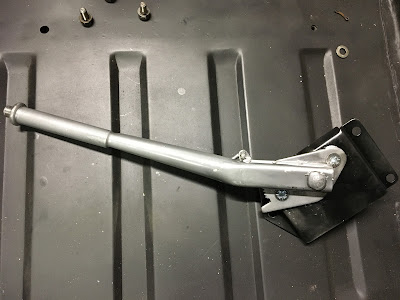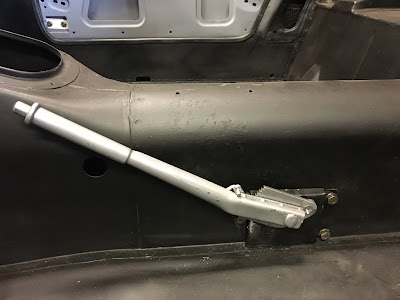I had to replace all the brake lines on the car. All of them where to badly damaged.
The new copper lines arrive coiled up and you have to unroll them to something more or less straight if you can.
You'll also need a pipe bending tool as whilst the copper pipe is easily moveable in your handles, it could buckle and pinch the line which would restrict the flow of brake fluid and the performance of your stopping ability, which isn't recommended.
You will be connecting up the master cylinder.
To the brake light sensor
And then the front and rear flexible brake pipes.
First tip is to make absolutely sure you have the correct pipe for each section. you don't want to be coming up short or having excess. The copper pipes I ordered where the perfect length. I know some like to make up their own pipes.
I started with the pipe that ran from the brake sensor to the front right. I thought that for a first time at bending this was the simplest to try first.
I found that by offering up the pipe into the rough position and making small bends and adjustments in my hands, worked fine. I then used the bending tool to make the more angled bends. Didn't take that long to have it in position and bolted in place.
The next pipe was from the master cylinder to the brake sensor. The hardest bit was making the bend where the tightening screw goes into the master cylinder and getting the angle right so you can tighten it up. Access isn't easy on these early models.
The next pipe to fit was from the brake sensor to the front left brake. This was a lot harder due to all the angles and changes in height. I spent so long trying to get it right I forgot to take some photo's of the path I took. But you can see it in the photo below.
You can see the route for the final pipe to connect the system to the rear brakes in the photo below.
It then runs down along the transmission tunnel held into place with two 'P' clips.
You can then connect the flexible pipe to the 'T' junction...
... and the bracket on the rear bulkhead.
Now ready to bleed the brakes! Well in my case after I've fitted the clutch pipe from the master cylinder, which is a right pain due to the lack of space around the clutch cylinder.
The rules of bleeding the brakes are to fill the master brake cylinder with fluid, ensuring you don't spill any on anything. Have a bottle of water handy in case you spill any, as that's the best to wash it away. Just don't get any water in the brake system if you do spill it!
Starting with the bleed nipple farthest from the master cylinder, which for me is the left rear and then work your way around the brakes to finish on the shortest length, which is my front right.
Basically you have to remove all the air from the pipes and you do that by unscrewing each bleed nipple in turn letting gravity push the fluid down the pipe into the braking system.
Now there are plenty of videos offering tips on how to bleed brakes the best. You can buy easy bleed systems as well.
Some suggest needing two people. One operating the brake peddle whilst the other opens and closes the nipple in time with the depression and release of the brake peddle.
Regardless of which method you choose, the main thing is to remove all the air bubbles.
The brake peddle should feel firm and not spongy.
Good luck!



























